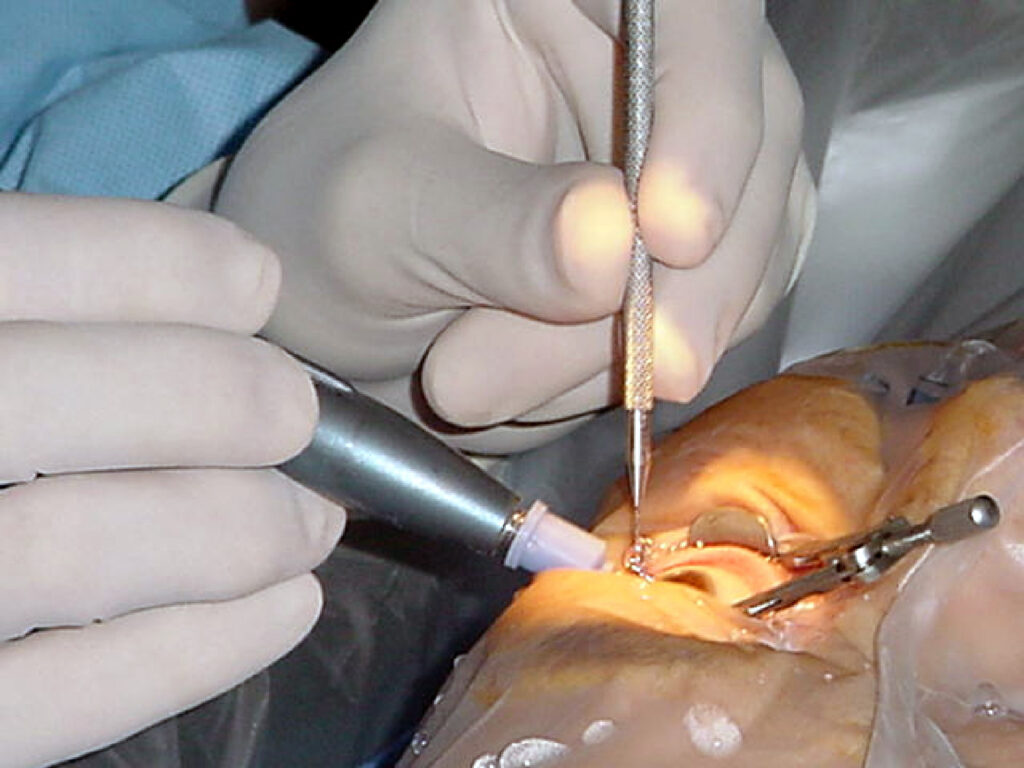Lens operations, commonly referred to as eye lens surgeries, are performed to restore or improve vision affected by various ocular conditions. These procedures are primarily conducted to remove and replace a clouded natural lens, typically caused by cataracts, or to correct refractive errors such as myopia, hyperopia, or astigmatism through refractive lens exchange (RLE). Advancements in microsurgery, intraocular lens (IOL) technologies, and laser-assisted techniques have made lens operations safer and highly effective.

Types of Lens Operations
Cataract Surgery
Cataract surgery is the most common lens operation globally. It involves the removal of a cloudy natural lens that impairs vision and replacing it with a synthetic intraocular lens.
Key Features:
- Outpatient procedure
- Painless and performed under local anesthesia
- Vision improves within 24–48 hours
Phacoemulsification, the standard technique, uses ultrasound waves to emulsify the lens before suction and replacement.
Refractive Lens Exchange (RLE)
RLE, also known as clear lens extraction, is performed on patients who seek permanent correction of high refractive errors or presbyopia and are not suitable for LASIK.
Advantages:
- Eliminates the need for glasses or contact lenses
- Prevents future cataract formation
Secondary IOL Implantation
In some cases, secondary IOLs are implanted when the original lens capsule is compromised or absent, such as post-trauma or complex cataract cases.
Lens Implantation for Aphakia
Aphakia refers to the absence of the natural lens, often due to surgical removal. IOLs are implanted in the anterior or posterior chamber to restore focusing ability.
Surgical Procedure: Step-by-Step Overview
Preoperative Preparations
- Comprehensive eye examination
- Measurement of eye parameters (axial length, corneal curvature) to determine IOL power
- Pupil dilation and administration of anesthetic drops
Alternative Technique: Extracapsular Cataract Extraction (ECCE)
Used for advanced or dense cataracts where phaco is not viable. A larger incision is made to remove the lens in one piece, followed by IOL implantation.
Intraocular Lens (IOL) Options
Monofocal IOLs
- Provide clear distance vision
- Glasses may be needed for near or intermediate vision
Multifocal IOLs
- Allow vision at multiple distances
- May cause halos or glare in night vision
Toric IOLs
- Correct astigmatism
- Custom-tailored to eye curvature
Accommodating IOLs
- Mimic natural lens movement to focus at varying distances
- Less commonly used than multifocal lenses
Recovery and Postoperative Care
Immediate Recovery Phase
- Patients return home the same day
- Protective shield worn overnight
- Avoid rubbing the eye or exposure to water
Medications
- Antibiotic drops to prevent infection
- Anti-inflammatory drops to reduce swelling
Follow-Up
- First check-up within 24–48 hours
- Additional visits after one week and one month
Restrictions
- Avoid strenuous activity for a few weeks
- Refrain from swimming and dusty environments
Potential Complications and Risk Mitigation
Common Complications
- Posterior Capsule Opacification (PCO): cloudy vision after months or years, treatable with YAG laser capsulotomy
- Intraocular pressure spikes
- Mild inflammation
- Dry eye symptoms
Rare but Serious Complications
- Endophthalmitis: infection inside the eye
- Retinal detachment
- IOL dislocation
Preventive Measures:
- Strict aseptic techniques
- Preoperative antiseptic use (povidone-iodine)
- Timely postoperative follow-ups
Lens Surgery in Special Populations
Pediatric Lens Surgery
Performed for congenital cataracts, often with primary IOL implantation. Visual rehabilitation is critical to prevent amblyopia.
Diabetic Patients
Require careful glucose control before and after surgery to prevent delayed healing or infections.
Patients with Glaucoma
Combined procedures like phaco-trabeculectomy may be considered to manage intraocular pressure alongside cataract removal.
Advancements in Lens Surgery Technology
Femtosecond Laser-Assisted Cataract Surgery (FLACS)
- Enhances precision during corneal incisions and capsulorhexis
- Reduces ultrasound energy usage
- Faster recovery and better outcomes
Premium IOLs with Light Adjustable Technology
- Customizable post-implantation using ultraviolet light
- Offers tailored vision correction after healing
AI-Based Biometry Tools
- Provide ultra-accurate IOL power prediction
- Minimize post-surgical refractive surprises
Cost Considerations and Accessibility
- Cataract surgery is often covered by public health programs or insurance
- Premium IOLs and advanced laser-assisted surgeries may incur additional costs
- Outreach programs in developing regions aim to reduce preventable blindness due to cataracts
Frequently Asked Questions:
Q1: How long does a lens operation take?
Typically, lens surgery takes 15–30 minutes under local anesthesia.
Q2: Is lens surgery painful?
No. It is usually painless due to topical or local anesthetic administration.
Q3: Can cataracts return after lens replacement?
No. The artificial lens does not become cloudy, but PCO may occur, mimicking cataract symptoms.
Q4: When can I resume normal activities after lens surgery?
Most patients can return to light daily activities within 1–2 days. Full recovery may take 4–6 weeks.
Q5: What are the success rates of lens operations?
Cataract and refractive lens surgeries have success rates exceeding 95% with proper patient selection and technique.
Lens operations, including cataract removal and refractive lens exchange, offer transformative improvements in visual quality and daily functionality. With minimally invasive techniques, rapid recovery, and customized intraocular lens options, these surgeries represent one of modern medicine’s most successful interventions. Comprehensive preoperative planning, precise surgical execution, and diligent postoperative care remain essential for optimal outcomes and lasting patient satisfaction.

